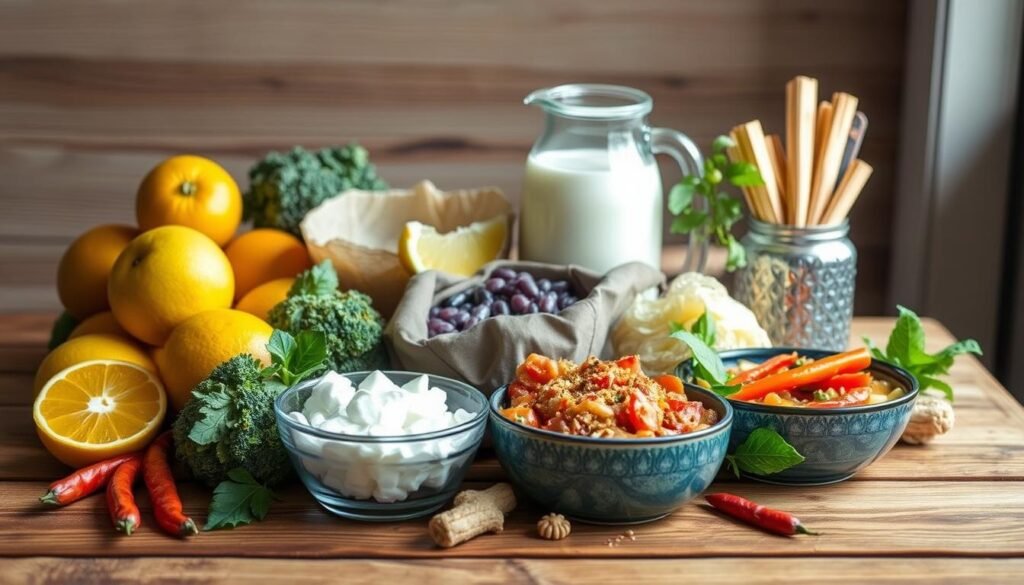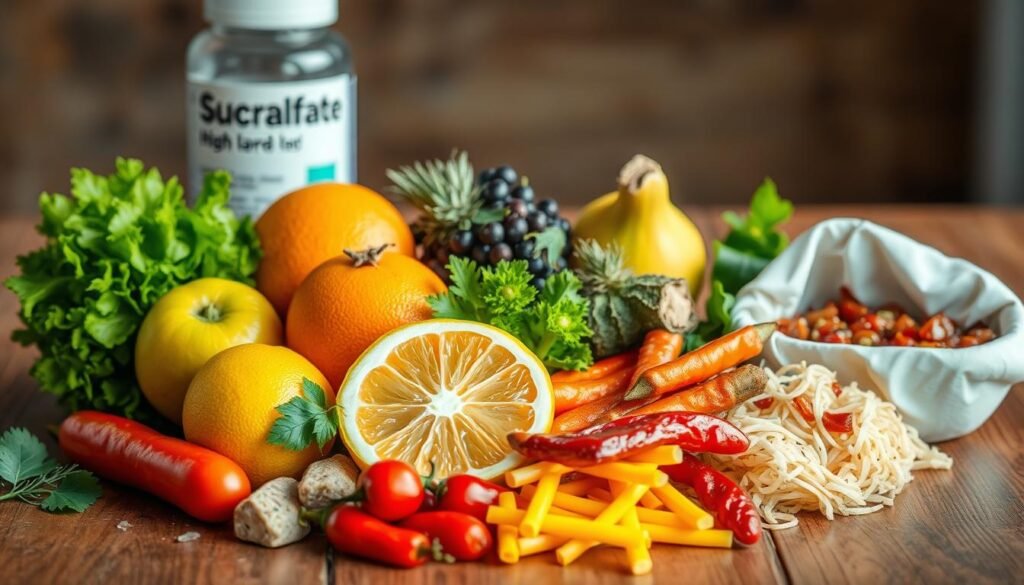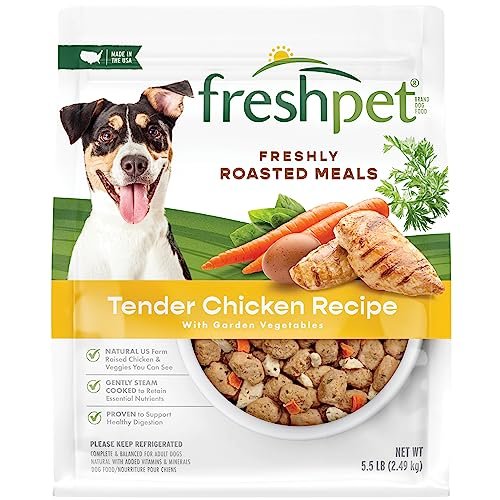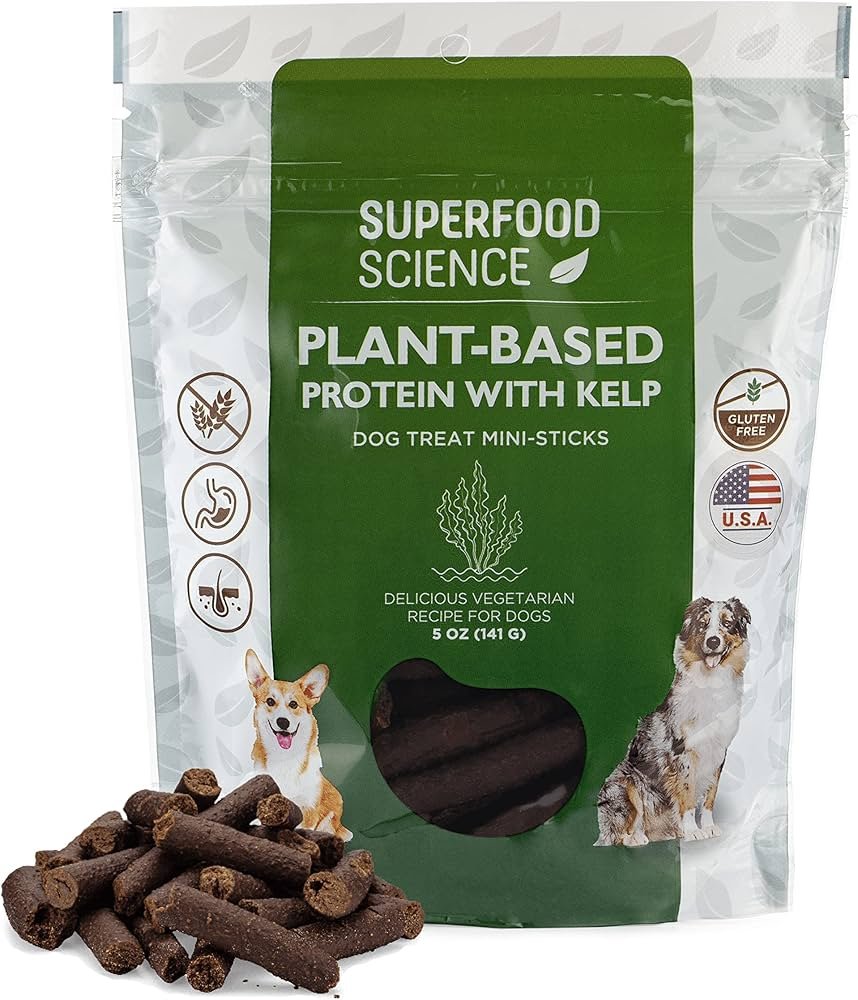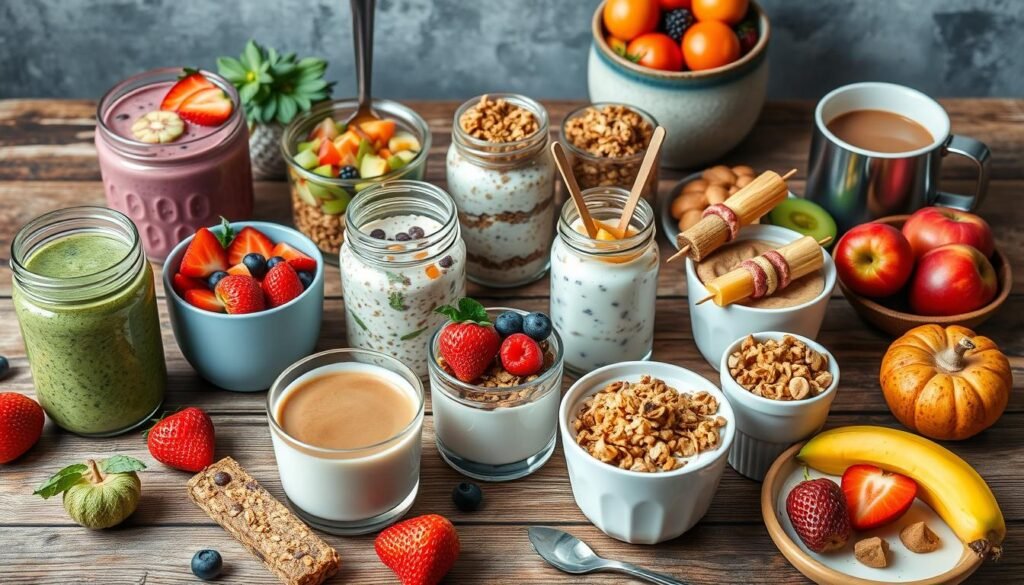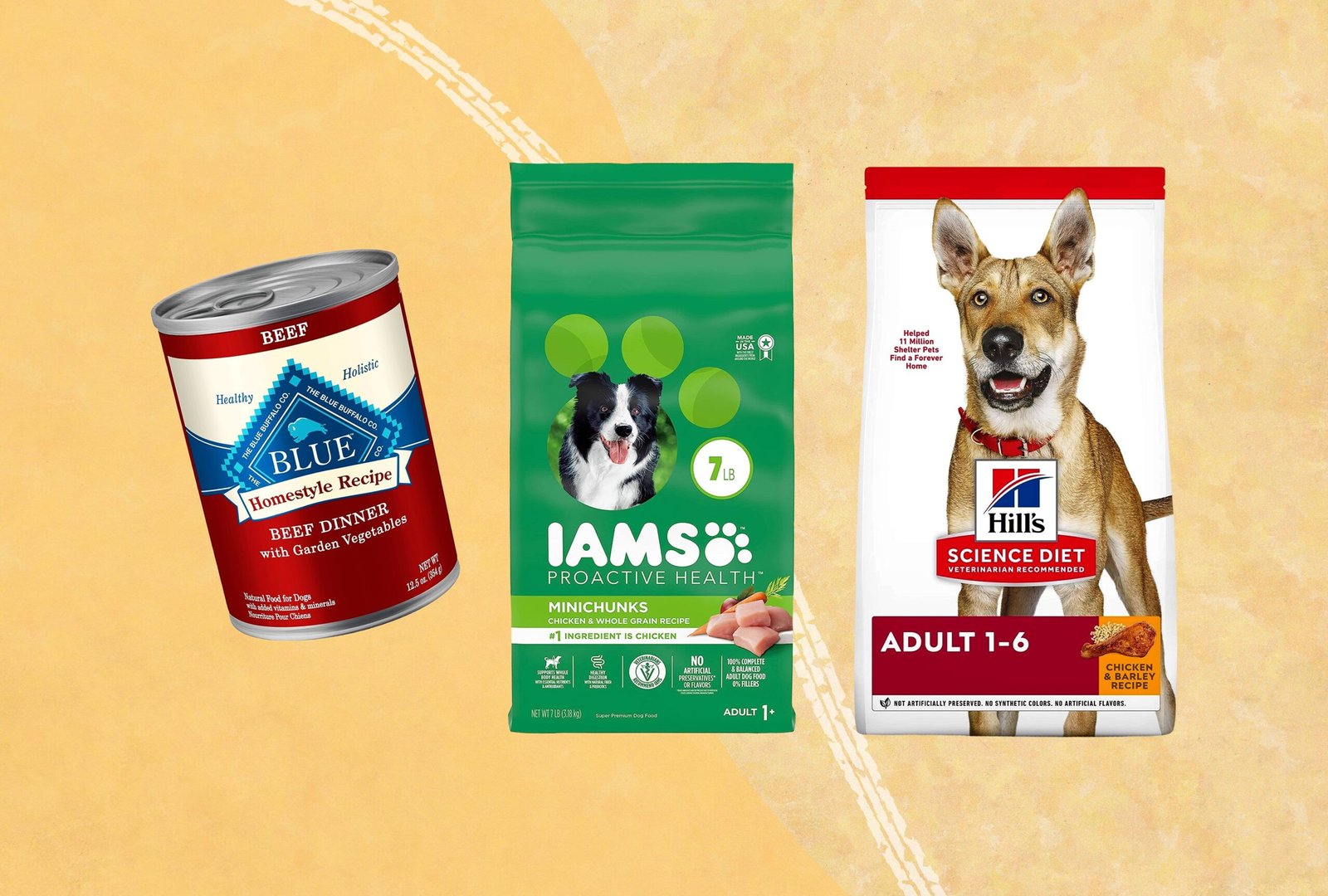Sucralfate is a common medicine for ulcers and stomach problems. It works well to ease symptoms and help healing. But, it’s key to know which foods might affect how well it works. This guide will help you understand foods to avoid while taking sucralfate. This way, you can plan your meals to get the most from this medicine.
Key Takeaways
- Certain foods can interact with sucralfate, reducing its effectiveness in treating ulcers and other digestive issues.
- It’s important to avoid consuming antacids, dairy products, and foods high in fiber within close proximity to taking sucralfate.
- Timing your meals in relation to sucralfate administration is crucial for maximizing the medication’s efficacy.
- A well-planned diet can help manage potential side effects, such as constipation, associated with sucralfate use.
- Consulting with your healthcare provider is recommended to determine the optimal dietary approach while taking sucralfate.
Understanding Sucralfate: Its Uses and Side Effects
Sucralfate, also known as Carafate, is used to treat stomach problems. It creates a shield on the stomach and intestines. This shield protects them from acid and enzymes.
This protection helps the body heal from ulcers and GERD.
What is Sucralfate?
Sucralfate is a medicine for duodenal ulcers. It has aluminum hydroxide and sucrose sulfate. These parts make a protective layer on the stomach and intestines.
This layer stops more damage and helps them heal.
How Does Sucralfate Work?
Sucralfate works by binding to acid and enzymes. This makes the stomach less acidic. It also makes more protective substances.
This helps the stomach and intestines heal faster.
Common Side Effects of Sucralfate
Some people may feel side effects like:
- Constipation
- Nausea
- Dry mouth
- Dizziness
- Headaches
But, serious side effects like allergic reactions or blockage are rare. If you have bad symptoms, see a doctor right away.
The Importance of Diet While on Sucralfate
When you take sucralfate, what you eat matters a lot. It helps your body use the medicine better. Foods can either help or hurt how well sucralfate works. Eating right can make sucralfate more effective and keep your stomach healthy.
How Food Interacts with Sucralfate
Sucralfate creates a shield on ulcers to protect them from acid. But, what you eat can change how well it works. Acidic foods like citrus and tomatoes can make it less effective.
The Role of Diet in Sucralfate Efficacy
- Eating a balanced diet is key for healing and health while on sucralfate.
- Yogurt and fermented veggies help sucralfate work better by supporting good gut bacteria.
- Lean proteins, whole grains, fruits, and veggies give the nutrients needed for healing.
- Fatty fish, rich in omega-3s, helps with inflammation and healing.
- Less caffeine, alcohol, and other irritants can make sucralfate more effective.
Eating the right foods can help sucralfate work better. Talk to your doctor about a diet plan that goes with your sucralfate treatment. This will help your body heal and feel better.
Foods That May Interfere with Sucralfate
When you take sucralfate, watch out for certain foods. They can affect how well the medicine works. Dairy, high-fiber, and acidic foods are the main ones to avoid.
Dairy Products and Sucralfate
Dairy like milk, cheese, and yogurt has calcium. This calcium can stop sucralfate from being absorbed. So, eat dairy two hours before or after sucralfate.
High-Fiber Foods and Sucralfate
High-fiber foods, like whole grains and fruits, can also block sucralfate. Try to eat them two hours before or after sucralfate.
Acidic Foods and Sucralfate
Acidic foods, like citrus fruits and tomatoes, can make sucralfate less effective. Avoid these foods while taking sucralfate.
Knowing about these food-medication interactions helps sucralfate work better. It supports your health and well-being.
Best Times to Take Sucralfate
Timing your meals is key when taking sucralfate. This medication, known as Carafate, protects stomach ulcers from acid. It forms a barrier over them.
The Impact of Meal Timing on Sucralfate
It’s best to take sucralfate when your stomach is empty. Do this one hour before or two hours after eating. This way, it can coat the ulcer well without food getting in the way.
Not following the sucralfate dosing instructions can harm its effectiveness. Taking it at the right time helps it heal stomach ulcers better.
Listening to your doctor about when to take sucralfate is very important. Knowing when to take it can help it work better. This supports your digestive health.
Tips for Managing Your Diet While Taking Sucralfate
It’s important to eat well when you’re taking sucralfate. This helps the medicine work better. You should watch out for foods that might mess with how well the medicine is absorbed.
Try to avoid dairy, high-fiber foods, and acidic foods when you take sucralfate. These foods can make the medicine less effective. It’s best to eat them at least two hours before or after sucralfate.
Eating foods that are good for you can help your body heal. Well Food Co has tips and recipes to help you eat well while taking sucralfate.
By eating right and following the diet tips for sucralfate, you can make the medicine work better. This helps you feel better overall. Always talk to your doctor to make sure you’re doing what’s best for you.
“A well-balanced diet is essential for maintaining overall health and supporting the effectiveness of medications like sucralfate.”
Foods to Avoid While Taking Sucralfate
When you’re taking sucralfate, watch what you eat. Some foods can mess with how well the medicine works. It’s key to know which foods to avoid while taking sucralfate.
Dairy products like milk, cheese, and yogurt are a big no-no. They have calcium that can stick to sucralfate. This makes the medicine less effective in treating ulcers or stomach problems.
High-fiber foods, like whole grains, fruits, and veggies, can also be a problem. They can mess with how your body absorbs sucralfate. Try to eat less of these dietary restrictions for sucralfate users while you’re taking the medicine.
Stay away from acidic foods too. Citrus fruits, tomatoes, and vinegar can make your stomach acid go up. This can work against what sucralfate is trying to do.
| Food Category | Examples | Reason to Avoid |
|---|---|---|
| Dairy Products | Milk, cheese, yogurt | Contain calcium that can bind to sucralfate and decrease its absorption |
| High-Fiber Foods | Whole grains, fruits, vegetables | Can interfere with the absorption of sucralfate |
| Acidic Foods | Citrus fruits, tomatoes, vinegar | Can increase stomach acid production, reducing the effectiveness of sucralfate |
By avoiding these foods to avoid with sucralfate, you can make your medicine work better. A balanced diet full of nutrients can also help. Always talk to your doctor about what to eat while taking sucralfate.
“Proper diet and nutrition play a crucial role in the effectiveness of sucralfate. Avoiding certain foods can help ensure the medication works as intended.”
Common Drug Interactions with Sucralfate
Sucralfate can interact with other drugs you might be taking. It’s important to tell your doctor about all your medications. This is because these interactions can change how well sucralfate and other drugs work.
Blood Thinners and Heart Medicines
Sucralfate might make blood thinners like warfarin and heart medicines like digoxin less effective. Your doctor will tell you when to take these medicines with sucralfate.
Antibiotics
Some antibiotics, like fluoroquinolones and tetracyclines, might not work as well with sucralfate. Your doctor might suggest taking these antibiotics at different times than sucralfate.
Thyroid Medications
Sucralfate can affect how well thyroid medicines like levothyroxine are absorbed. It’s key to take these medicines at the right time in relation to sucralfate.
Antacids
Antacids might not be absorbed as well when taken with sucralfate. Your doctor might suggest taking these medicines at different times or finding other options.
It’s very important to work closely with your doctor about sucralfate interactions. By telling your doctor about all your medications, you can help make sure sucralfate is used safely and effectively.
Proper Administration of Sucralfate
Sucralfate is used to treat stomach ulcers. It’s important to know how to take it right. We’ll cover the dosage and what to do if you miss a dose.
Dosage Instructions
Adults with duodenal ulcers should take 1 gram of sucralfate four times a day. This is for 4 to 8 weeks. For keeping ulcers away, take 1 gram twice a day.
It’s best to take sucralfate on an empty stomach. Do this at least one hour before or two hours after eating.
Missed Dose Instructions
- If you miss a dose, take it as soon as you remember.
- But if it’s almost time for the next dose, skip it. Just take the next one.
- Don’t take two doses to make up for missing one. This can cause more side effects.
- Talk to your doctor if you’re worried about missed doses or how to take sucralfate.
Following the right dosage is key for sucralfate to work well. By doing this, you help your stomach health.
If you have questions about sucralfate, talk to your doctor. They can help with dosage and what to do if you miss a dose.
Conclusion
Managing your diet while taking sucralfate is key. It helps the medication work better and heal faster. Knowing what foods to avoid and when to take the medication is important.
Eating foods rich in nutrients also helps your body heal. This supports the medication’s effects. It’s all about making the right food choices.
Always talk to your doctor about your diet and sucralfate. They can give you advice that fits your needs. This way, you can get the most out of sucralfate and feel better sooner.
Success with sucralfate comes from using both medicine and good diet habits. By choosing wisely and working with your doctor, you can improve your gut health. This helps you recover quickly.

